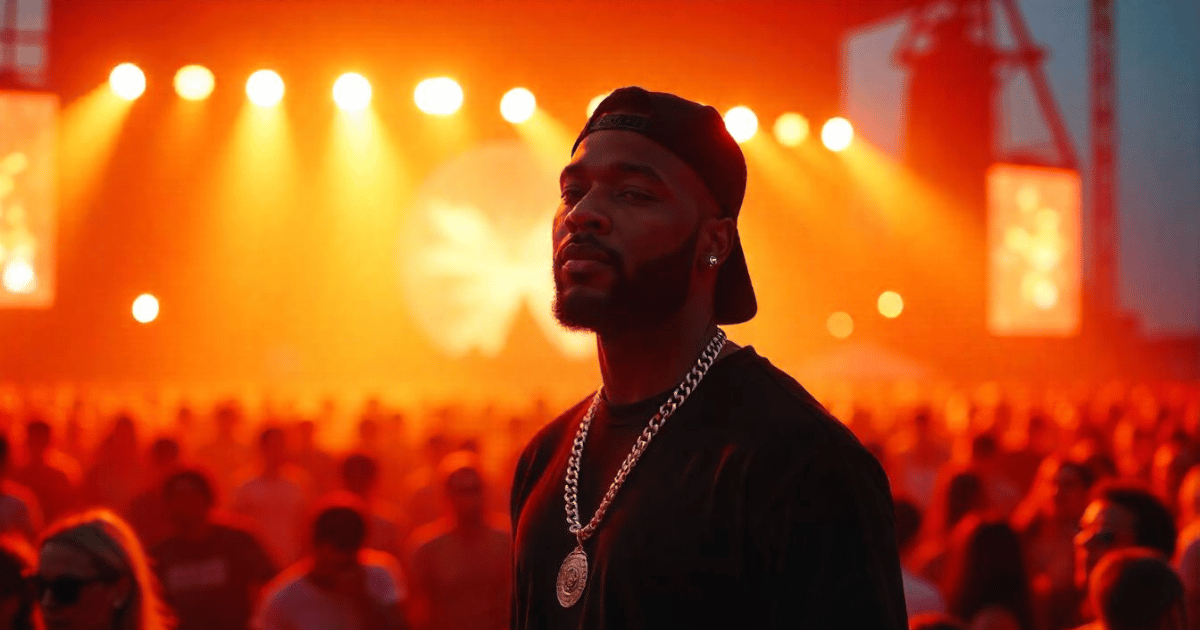There are moments in music when a voice cuts through the din of mediocrity and conformity—a voice that doesn’t just entertain but challenges, provokes, and shatters comfortable illusions. Kendrick Lamar is that voice. If you’ve ever been jolted awake by the relentless, truth-scorched verses of “Alright” or felt your pulse surge with the blistering beats of “HUMBLE,” then you already know there’s something alchemic at work. This isn’t just music; it’s a full-throttle cultural upheaval. For more industry insights, check out the BeatsToRapOn blog for other perspectives on rap and hip-hop. It’s a manifesto scrawled in sound and fury, and it forces us to confront the harsh realities of race, power, and identity in America.
In a world saturated with polished pop and prepackaged radio hits, Kendrick Lamar’s best songs are raw, unfiltered, and explosively honest. They are the audacious outcry of a generation fed up with sugar-coated narratives—a blistering indictment of injustice wrapped in the lush tapestry of hip-hop. This is not an essay to pat him on the back with reverence like a museum exhibit; it’s a call to arms. It challenges assumptions, exposes contradictions, and dares to ask: what happens when art and activism collide in a way that unsettles both the establishment and its enablers?
The Phenomenon of Kendrick Lamar: Breaking Through the Static
Kendrick Lamar isn’t merely a rapper—he’s a cultural earthquake. Emerging from the gritty streets of Compton, his rise has been a testament to the power of art as a vessel for truth. His songs reverberate with the tension of a society on the brink, with the fury of a suppressed voice finally unleashed. From the moment he first spit verses that painted the vivid, painful realities of life in a fractured America, Kendrick has demanded that we see the world not as it is neatly packaged in the glossy pages of mainstream media but as it is: raw, brutal, and pulsating with life. His story resonates with anyone striving to break barriers; aspiring artists can explore further insights in our comprehensive guide for aspiring rappers.
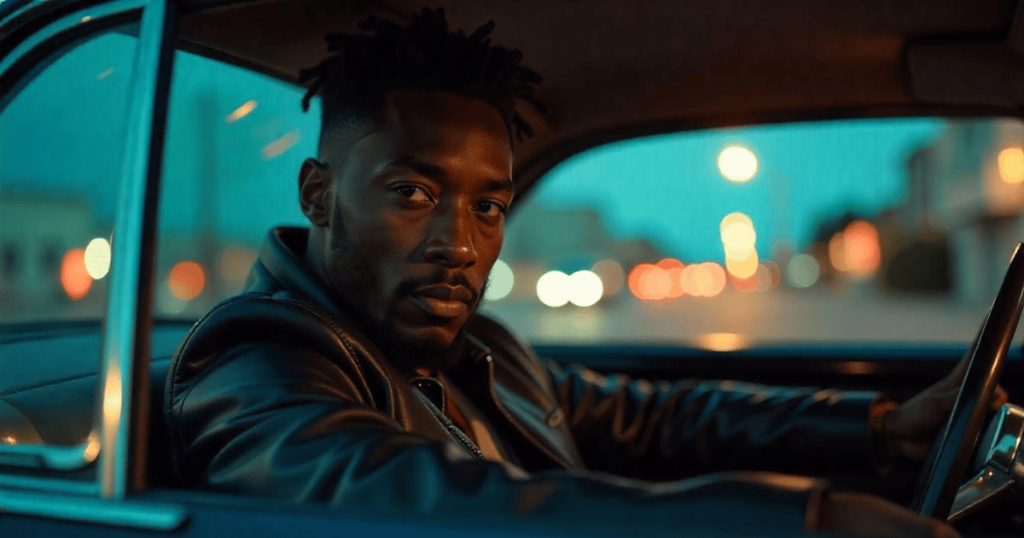
In tracks like “Bitch, Don’t Kill My Vibe” and “Money Trees,” Kendrick’s flow dances on the razor’s edge between introspection and rebellion. For those interested in the secrets behind creating infectious rap beats, our ultimate guide to rap beats dives into the process behind these captivating rhythms. There’s an honesty there that shreds any pretense of the sanitized, corporate-controlled version of hip-hop. He confronts the contradictions head-on—where success meets systemic failure, where personal ambition collides with collective suffering. His narrative is deeply rooted in the lived experience of a marginalized community, yet it transcends the confines of its origins to speak to a universal truth about struggle and redemption.
What makes Kendrick’s work so magnetic is not just his unparalleled lyrical dexterity or his knack for crafting hooks that linger in the mind long after the track ends; it’s his refusal to adhere to a single narrative. His songs are layered like urban stratigraphy—each listen revealing a new depth, a new interpretation. “Sing About Me, I’m Dying of Thirst” is an elegy for lost souls, a searing portrayal of life at the margins, while “DNA” is an anthem of identity and defiance, a reclamation of self in a world that would have him remain silent. There is a rawness here, a grit that defies commodification, that resists the smoothing out of reality for mass consumption.
But let’s not kid ourselves: Kendrick Lamar’s music isn’t just about high-minded reflections on race, identity, or injustice. It’s also about the visceral thrill of a perfectly crafted beat, the explosive energy of a well-timed verse, and the undeniable magnetism of a sound that dares to be different. His work is an alchemy of rhythm, poetry, and anger—a cocktail that’s as intoxicating as it is incendiary.
Breaking Down the Tracks That Redefined Hip-Hop
Let’s tear into the very sinew of his discography, slicing open the tracks that have become cultural touchstones. We’re not here for sanitized summaries or academic footnotes; we’re here to feel the heat, the raw pulse, the jittery energy of Kendrick Lamar’s best songs.
“HUMBLE.”
Right off the bat, “HUMBLE.” slams you in the face with its minimalist production—a stark, pounding beat that’s as unyielding as a judge’s gavel. If you’re curious about how technology is reshaping music creation, our piece on AI music creation with Suno Beats offers a forward-looking perspective. But underneath that hypnotic pulse is a complex interplay of ego and humility, a contradiction that mirrors the internal battles of a man caught between divine self-assurance and the crushing weight of expectation. The track’s sparse instrumentation amplifies Kendrick’s razor-sharp delivery, forcing every word, every breath, to count. In a moment that is both a declaration and a dismantling of modern rap’s excess, he commands us to “be humble” while simultaneously reminding us that self-respect is the only armor worth wearing. It’s a brutal reminder that in a world obsessed with bravado, true power lies in the unyielding truth of one’s own worth.

“Alright.”
Then there’s “Alright”—a track that has transcended its musical boundaries to become a rallying cry for resistance. Meanwhile, those interested in how social media is influencing music can learn more from our article on how social media algorithms are reshaping music discovery. This isn’t just a song; it’s a declaration of resilience. Amid police brutality, systemic racism, and the suffocating grip of economic disenfranchisement, “Alright” emerges as an anthem of hope. It’s raw, it’s defiant, and it’s unashamedly unpolished in its rallying cry: “We gon’ be alright.” In its fevered repetition and militant undertone, the track captures the restless spirit of a generation that refuses to be silenced. It’s a siren call that echoes in protest rallies and on street corners, a piece of sonic artillery in the fight for justice. Yet, within its chorus lies a subtle irony—a recognition that hope, like the very act of resistance, is as fragile as it is potent.
“King Kunta.”
If “HUMBLE.” and “Alright” are declarations of identity and hope, then “King Kunta” is a full-throated reclaiming of history. The track is a vivid tapestry woven with references to slavery, exploitation, and the enduring fight for dignity. For additional background on hip-hop’s evolution, consider reading about the evolution of rap beats from the Bronx to the global stage. Its swagger is undeniable, its beat infectious—a funk-laden rebellion that channels the spirit of James Brown and Parliament-Funkadelic. But beyond its irresistible groove, “King Kunta” is a pointed critique of a music industry that commodifies black excellence while profiting off the very struggles it helped create. Kendrick doesn’t just rap about power—he embodies it, challenging the status quo with a bold, unapologetic proclamation of his own worth and the worth of his people.
“DNA.”
Stepping into “DNA,” we find a track that’s a linguistic scalpel, dissecting identity with the precision of a surgeon. This isn’t a mere brag track; it’s a manifesto encoded in the very fibers of Kendrick’s being. The song pulses with a primal energy, the aggressive beats and rapid-fire delivery reflecting the inner turbulence of a man determined to define himself on his own terms. Here, Kendrick interrogates the constructs of race, heritage, and destiny. He weaves intricate wordplay with blistering social commentary, challenging listeners to confront the inherited narratives that have long defined—and confined—their identities. It’s a visceral journey into the self, an unflinching exploration of what it means to be both a product and a rebel of one’s environment.
“Sing About Me, I’m Dying of Thirst.”
For every explosive anthem, there’s a moment of haunting introspection, and “Sing About Me, I’m Dying of Thirst” is that quiet storm. This track is a sprawling narrative epic that defies conventional song structure, a meditation on mortality, memory, and the relentless passage of time. Here, Kendrick’s voice softens, his verses becoming elegiac whispers that carry the weight of loss and longing. To better understand the structure behind such complex tracks, our mastering rap song structure guide breaks down the art of song construction. The song’s structure is deliberately unrefined, echoing the chaotic nature of life itself—a life punctuated by moments of beauty, pain, regret, and redemption. It’s a reminder that even in the midst of rebellion and defiance, there’s a tender vulnerability that binds us all. It’s raw, it’s messy, and it’s a mirror held up to the soul of a society in flux.
“Bitch, Don’t Kill My Vibe.”
In “Bitch, Don’t Kill My Vibe,” Kendrick lays bare the struggle to maintain creative purity in a world eager to dilute it. The track’s breezy, almost languid flow is deceptive—it’s a siren song for those who have ever felt the sting of external expectations crashing against the fragile fortress of one’s inner world. The refrain is both a plea and a battle cry, a demand for respect in a realm that’s too often content to commodify authenticity. Here, Kendrick challenges the listener to recognize that the most potent form of rebellion is not always the loudest, but the steadfast refusal to let one’s inner spark be snuffed out by the dissonance of a conformist society.
“Money Trees.”
And then there’s “Money Trees”—a track that meanders like a hazy summer afternoon, yet seethes with an undercurrent of urgency. It’s an ode to the dreams and disillusionments of youth, a bittersweet exploration of the promises and pitfalls of chasing the American dream. For those looking to understand the business side of hip-hop, our ultimate music career guide outlines the balance between artistic vision and commercial success. With its languid guitar loops and hypnotic percussion, “Money Trees” is as much a reflection on the lure of wealth as it is a critique of the systemic forces that conspire to keep that wealth tantalizingly out of reach. Kendrick’s verses are lyrical vignettes of life in a world where every dollar is a promise, every beat a heartbeat of a generation struggling to survive—and thrive—against insurmountable odds.
Each of these tracks stands not merely as a collection of verses and hooks but as a testament to the power of hip-hop as a tool for social commentary and cultural transformation. They are born of anger, hope, and the unyielding conviction that music can be a force for change. Yet, for all its brilliance, Kendrick’s discography is a paradox—a collision of raw vulnerability and unbridled aggression, a harmonious dissonance that refuses to be tamed by conventional boundaries.
Commercial Success Meets Artistic Integrity
Kendrick Lamar’s ascent to superstardom isn’t without its ironies. There’s a delicious contradiction at the heart of his journey—a man who emerged from the harsh realities of Compton now sits atop a pedestal in a glittering, global music industry that is all too eager to sanitize and commodify the very anger and authenticity that made him a revolutionary force. If you’re interested in how artists navigate these contradictions, our case studies on famous hip-hop artists getting famous provide further exploration. How does one reconcile the raw, incendiary spirit of tracks like “DNA” and “Alright” with the expectations of mainstream success? It’s a tightrope walk over a chasm of compromise, and Kendrick navigates it with a balance that is as precarious as it is mesmerizing.
There’s a palpable tension in the way Kendrick crafts his art—each track is a battleground where the imperatives of profit and popularity wrestle with the need for truth and rebellion. Consider the paradox of “HUMBLE.”—a track that simultaneously commands humility and revels in its own undeniable swagger. It’s as if Kendrick is daring the industry to try and box him in, to strip away the layers of cultural significance until only a sanitized product remains. And yet, in doing so, he exposes the absurdity of a system that preaches conformity while celebrating the very differences it seeks to exploit.
This tension isn’t a mere footnote in Kendrick’s oeuvre—it’s the very heart of his artistic identity. His music is a defiant refusal to play by the rules of a commodified culture. It’s a middle finger to a world that would have us believe that art must be packaged, polished, and palatable in order to succeed. Instead, Kendrick’s best songs are a rallying cry for authenticity, a visceral reminder that the most potent art is often the messiest, the most unpredictable, and the least concerned with appeasing the powers that be.
Yet, this duality raises uncomfortable questions: Who benefits from Kendrick’s meteoric rise? Is it the disaffected youth who find solace in his defiant verses, or the corporate behemoths that capitalize on his image while diluting the very essence of his message? The answer is as murky as the beat in “Money Trees”—a swirling mix of genuine cultural insurgency and the inevitable compromises of a system built on spectacle and profit.
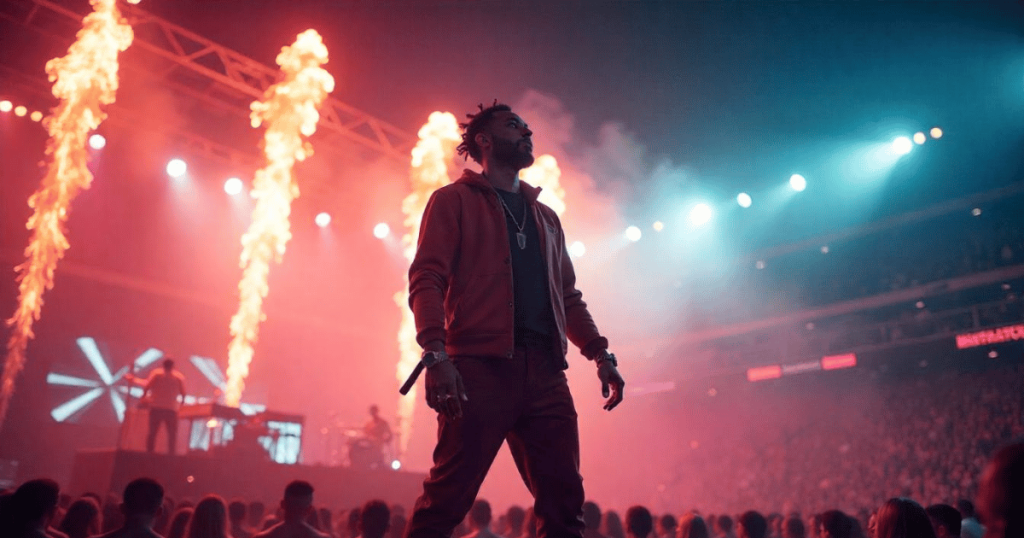
The commercialization of rebellion is a paradox that has haunted the genre since its inception, and Kendrick’s journey is a stark reminder of that eternal conflict. In a world where the line between art and product is increasingly blurred, his music stands as a testament to the power of raw, unfiltered expression—a call to remember that true artistry lies not in appeasing every market trend, but in daring to expose the brutal truths that many would prefer remain hidden. For those looking to create and market their own beats, our guides on how to sell your beats online and the business side of hip-hop offer essential insights.
How Kendrick’s Music Reshaped a Generation
Kendrick Lamar’s influence extends far beyond the confines of the recording studio. His songs are not just tracks on an album—they’re cultural artifacts, each a snapshot of a moment in time, a reflection of the collective struggle and aspiration of a generation. In every verse, there’s an undercurrent of resistance, a challenge to the prevailing narratives that have long dictated the terms of social and political discourse.
Hip-hop has always been a battleground—a space where the marginalized reclaim their voice in the face of systemic oppression. Yet, Kendrick elevates this tradition to an art form that is as intellectually rigorous as it is emotionally charged. His music is steeped in historical context, drawing on the legacies of those who came before him while simultaneously forging a new path for the future. It’s a rare fusion of the old and the new—a lyrical dialogue between the past’s scars and the future’s promise.
Tracks like “King Kunta” are not mere exercises in wordplay; they are cultural commentaries that draw on centuries of struggle and resistance. The swagger, the defiance, the funk-infused rhythms all serve as a reminder that the fight for dignity is as old as time—and that every new generation must find its own way to keep that flame burning. Here, Kendrick’s work is both a tribute and a repudiation—a nod to the past’s resilience and a call to arms for the battles still to be fought.
And then there’s the raw, infectious optimism of “Alright.” In the midst of political turmoil, social unrest, and a seemingly endless barrage of bad news, “Alright” is a spark of hope—a beat that carries the promise of resistance, of solidarity in the face of overwhelming odds. It’s a reminder that even when the world feels like it’s crumbling, there’s a fierce, unyielding energy in communities that refuse to give in to despair.
Yet, Kendrick’s cultural impact isn’t confined to the streets or the protest rallies—it permeates every facet of modern life, from fashion to film, from academia to social media. His work challenges us to look beyond the surface, to interrogate the structures of power that dictate not only our music but our very existence. In doing so, he has redefined what it means to be a cultural icon in the 21st century—a provocateur who uses his platform not for self-aggrandizement, but as a megaphone for the voiceless, the disenfranchised, and the rebels who dare to dream of a better world.
This cultural catalysis is not without its detractors. There are those who see Kendrick’s lyrical introspection as a form of elitism, a highbrow exercise in intellectual posturing that risks alienating the very communities he aims to uplift. They argue that in striving for artistic profundity, he sometimes strays into a territory that is as inaccessible as it is profound. But this criticism misses the point: the beauty of Kendrick’s work lies in its multiplicity of meanings. Whether you’re nodding along to a catchy hook on the subway or dissecting every bar in the solitude of your room, his music adapts to you—it speaks in a language that is as raw and unruly as life itself.
The Future of Kendrick Lamar’s Legacy
So where do we go from here? If Kendrick Lamar’s best songs are both a mirror and a blueprint for our times, what does that say about the future of music and culture? The answer is as enigmatic as a half-spoken verse in a dimly lit club. There’s no tidy conclusion here—only the echo of a challenge: to keep questioning, keep pushing back, keep seeking the truth even when it’s wrapped in layers of irony and contradiction.
Kendrick’s work is a constant negotiation between light and darkness, hope and despair—a reminder that progress is rarely linear and that every victory is tinged with the bitterness of the struggles that preceded it. His legacy is not a static monument but a living, breathing testament to the power of music as a catalyst for change. It’s an invitation to reimagine narratives, to question the status quo, and to understand that sometimes the most revolutionary act is simply to remain unapologetically true to oneself.
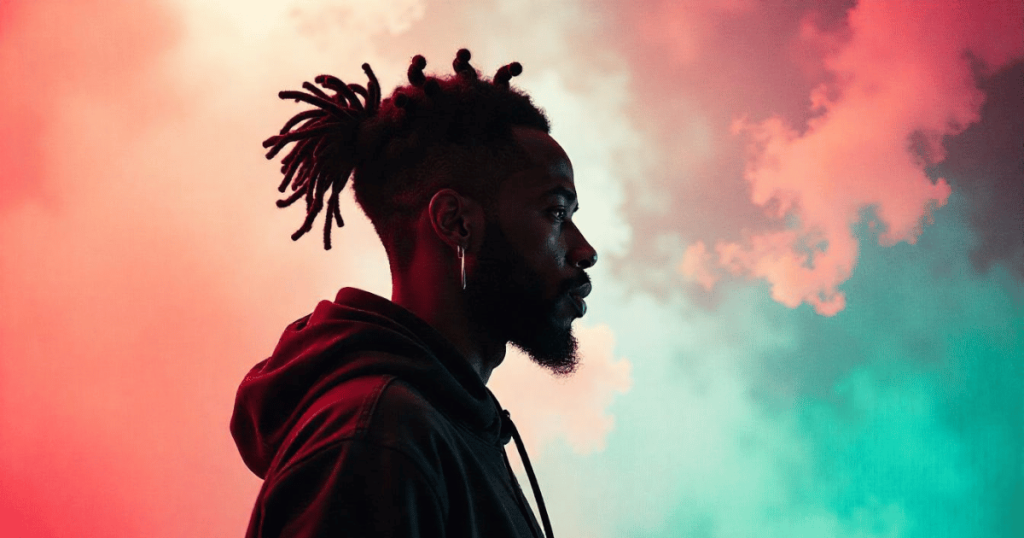
In a society that often seeks to dilute dissent with convenience and complacency, Kendrick Lamar stands as a defiant beacon—a force that refuses to conform to the sanitized expectations of an industry more comfortable with formulas than with raw truth. His songs are both a refuge and a rallying cry, a space where vulnerability meets ferocity, where history’s scars are transformed into the blueprints of future revolutions.
There is an urgency in Kendrick’s music, a pulse that throbs with the collective heartbeat of a generation that’s seen too much pain to settle for half-measures. His tracks are not the placid lullabies of safe listening—they’re the battle cries of a people determined to reclaim their narrative, to reforge the broken promises of yesterday into the resilient anthems of tomorrow.
As we hurtle toward an uncertain future—fraught with political disarray, economic disparities, and cultural schisms—Kendrick’s music reminds us that within chaos lies the potential for transformation. It challenges us to see beauty in the broken, to find strength in our shared struggles, and to embrace the messy, unpredictable process of becoming. And that, ultimately, is the most potent form of rebellion: refusing to let the world define us, and instead, defining it on our own uncompromising terms.
The Unruly Pulse of a New Era
In the end, Kendrick Lamar isn’t merely a musician—he’s an experiment in what happens when art refuses to play by the rules. His best songs are a manifesto for a generation that’s tired of polite niceties and hollow slogans. They are raw, unapologetic, and as unpredictable as the shifting currents of our cultural landscape.
Every time Kendrick steps to the mic, he’s laying down a gauntlet—a challenge to every system that has ever tried to silence the raw truth of black experience, to every establishment that would rather keep the flame of rebellion dimmed and controlled. It’s a refusal to compromise, a bold declaration that art is not a commodity to be traded, but a weapon in the fight for justice.
There are moments in “DNA” when the intensity of his delivery nearly shatters the confines of the track, moments when the weight of every inherited struggle and every hard-won victory comes crashing through in a torrent of sound and fury. And in those moments, as the beat roars like a beast unleashed, you realize that Kendrick’s music is more than just entertainment—it’s an act of defiance, a celebration of the human spirit in its rawest, most unyielding form.
The cultural conversation that Kendrick has ignited isn’t about simple answers or neat conclusions—it’s about the messy, beautiful, and often contradictory truths of our time. His songs force us to grapple with the uncomfortable, to question what we’ve been told about success, identity, and power. They compel us to acknowledge that the battle for dignity and truth is far from over, and that every track is a new chapter in a story that is still being written.
Embracing the Chaos of Truth
As you sit with these songs—the beats vibrating through your bones, the lyrics echoing in the recesses of your mind—remember this: Kendrick Lamar’s best tracks are not meant to comfort you. They’re designed to disrupt, to shake you awake from the slumber of complacency. They are a call to arms for anyone who has ever felt sidelined by a system that values profit over people, conformity over creativity.
There’s an irreverent joy in the chaos of his music, a reminder that art in its purest form is anarchic, unpredictable, and fiercely independent. It’s a middle finger to those who would have you believe that success means taming your wildest instincts, that truth must be filtered through layers of market-friendly polish. Instead, Kendrick invites us to embrace the messiness of existence, to find beauty in the fractures, and to recognize that every scar tells a story of survival, resistance, and hope.
In a world where every headline is a curated narrative and every soundbite a carefully crafted image, Kendrick Lamar’s music is an act of rebellion—a fearless exploration of the untamed, the unfiltered, the unrefined. It’s a reminder that even in the midst of chaos, there is a beauty that only the brave can see, a poetry that only those willing to confront the darkness can appreciate.
More Than Music, It’s a Movement
If you’re still with me after this relentless journey through Kendrick’s sonic landscape, then you know that his work is not merely an assortment of tracks to be played on repeat. For those looking to delve deeper into how trends are emerging and evolving, our articles on trap music as a revolution in rhythm and rebellion and creating authentic trap instrumentals highlight the pulse of today’s urban soundscape. It’s a living, breathing chronicle of a cultural revolution—a rebellion that refuses to be bottled up and sold as a neat package on streaming services. Each song is a protest, a confession, a declaration that the struggles of the past and the hopes for the future are inextricably intertwined.
From the scratch of the needle on a vintage record to the latest digital drop, Kendrick Lamar’s influence is a force that has reshaped not only the soundscape of hip-hop but also the very fabric of cultural discourse. His best songs are a testament to the idea that music can be as incendiary as it is introspective, as chaotic as it is calculated. They are the soundtrack of a generation unwilling to settle for the status quo—a generation that demands, insists, and ultimately transforms.
In a crowded musical landscape, authenticity is hard to come by. Yet Kendrick’s artistry—and the broader movement it inspires—challenges the status quo. For further reading on the role of independent branding in hip-hop, see our piece on branding for independent rappers: the marketing blueprint in 2025.
Look around: the echoes of “Alright” have reverberated through protest marches, the fierce declarations of “HUMBLE.” have set social media abuzz, and the intricate narratives of “Sing About Me, I’m Dying of Thirst” have provided solace to those grappling with loss and longing. This is not mere nostalgia—it’s an ongoing revolution, a seismic shift in how we understand art, identity, and the power of the individual voice in a collective struggle.
As we navigate these turbulent times—where the personal is political, and the political is deeply personal—Kendrick Lamar stands as a reminder that every beat, every verse, is a call to reexamine the narratives we’ve been fed. His music isn’t a luxury—it’s a lifeline, a fierce, unyielding reminder that even when the odds are stacked against you, the raw truth of your existence remains the most potent form of resistance.
What Kendrick’s Best Songs Mean for Us All
So, what then is the legacy of Kendrick Lamar’s best songs? It’s not something that can be neatly archived or displayed in a museum of modern art. Instead, it’s a legacy that lives and breathes in every heart that beats to the rhythm of defiance, every mind that dares to dream of a world reshaped by truth. It’s the unvarnished record of a cultural shift—a reminder that progress is messy, painful, and exhilarating all at once.
Every time you press play on “King Kunta,” you’re not just listening to a track; you’re participating in an ongoing dialogue about power, history, and identity. Every verse is a reminder that the struggle for self-determination is perpetual, that each generation must forge its own path even as it stands on the shoulders of those who came before. Kendrick’s music challenges us to confront the contradictions within ourselves and our society—to see that beauty can arise even from the most shattered fragments of a broken system.
This legacy is not without its challenges. There are critics who insist that in the pursuit of artistic truth, Kendrick sometimes veers into territories that are as inaccessible as they are profound. They argue that the very intensity of his narrative risks alienating those it seeks to uplift. But such criticisms miss the point entirely. The power of Kendrick Lamar’s work lies in its refusal to conform to any single definition of success, its unyielding insistence that art should provoke thought, spark debate, and ultimately, transform lives.
A Sonic Revolution Without End
We find ourselves at the end of this sprawling, fevered exploration—a journey through Kendrick Lamar’s best songs that has been as unpredictable as it has been enlightening. But here’s the thing: there is no final word, no neat conclusion to this ongoing revolution. The raw, unfiltered energy of his music is a spark that, once lit, refuses to be contained. It’s a living manifesto, a daily reminder that the struggle for truth and dignity is as relentless as the beat that drives us forward.
Kendrick Lamar’s songs are more than tracks on a playlist—they are the anthems of a generation, the voice of a people who have weathered the storm of systemic injustice and emerged with scars that testify to their resilience. They are a call to remain vigilant, to continue questioning, to never settle for the easy narratives that our society so often offers.
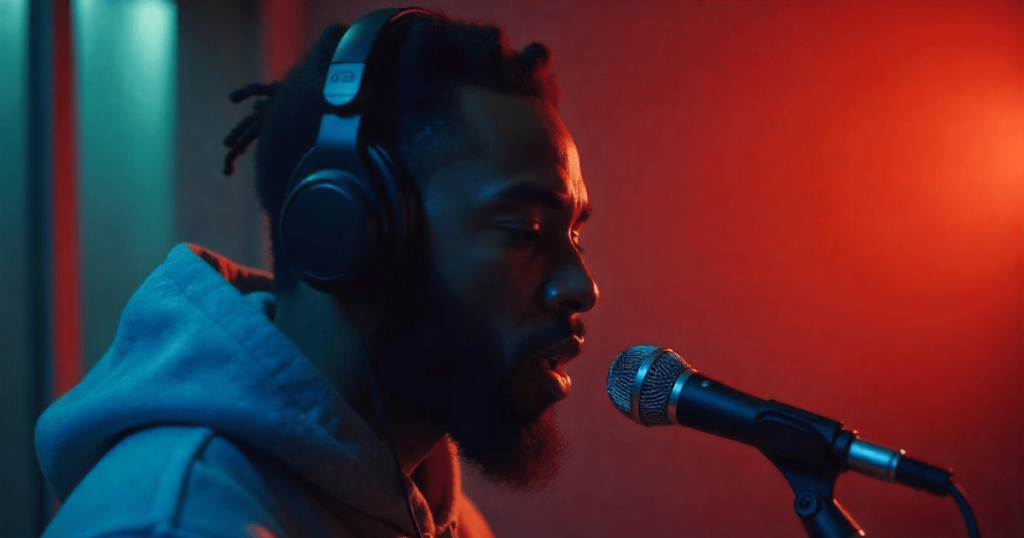
In the end, it’s up to each of us to decide how we will carry this legacy forward. Will we allow ourselves to be lulled into complacency by the seductive promises of a sanitized, corporate-controlled world? Or will we dare to listen, really listen, to the raw, unadulterated truths embedded in every verse, every hook, every pulse-pounding beat? The choice, as always, is ours.
As the echoes of “Alright” continue to reverberate through protest marches and quiet moments of introspection alike, one thing remains clear: Kendrick Lamar’s best songs are a rallying cry for a world that refuses to be defined by its limitations. They are a testament to the power of art to disrupt, to challenge, and ultimately, to transform.
And so, as we navigate the uncertain terrain of our times, let us carry forward the fierce spirit of rebellion that Kendrick has ignited. Let us find strength in our scars, beauty in our brokenness, and hope in the relentless pursuit of truth. Because in the end, that is the true legacy of Kendrick Lamar—a legacy that is not confined to the annals of music history, but one that lives in every heart that dares to defy, to resist, and to dream of a better world.
In this sprawling sonic revolution, there are no easy answers. There are no polished conclusions or tidy resolutions. There is only the raw, unyielding truth of a man who refuses to be silenced, and a generation that, in the echo of his verses, finds the strength to stand up, speak out, and keep fighting.
This isn’t just a celebration of sound—it’s a celebration of the human spirit in its most unbridled, defiant form. It’s a reminder that every beat, every line, every burst of lyrical fury is an invitation to reexamine the world around us—to question the narratives we’ve been given, to challenge the status quo, and to forge a path that is uniquely our own.
So, let the records spin and the beats drop. Let the raw energy of Kendrick Lamar’s best songs serve as a beacon for all those who dare to dream, who dare to resist, and who dare to believe that a better tomorrow is not only possible, but inevitable.
In the end, the revolution is not coming—it’s already here, pulsating in every note, in every word, in every defiant breath of life. And as long as that fire burns, so too does the promise of a future defined not by conformity, but by the unyielding, chaotic beauty of truth.
Maybe you’re still processing the magnitude of what you’ve just read—maybe your mind is still racing with the raw power of a beat that refuses to be contained. That’s the point. Kendrick Lamar’s best songs are a mirror to our souls, an untamed reflection of a society that’s as beautiful as it is broken. They are an open invitation: listen, feel, and above all, never stop questioning. The revolution lives on in every verse, every heartbeat, and every moment of unapologetic truth.
This is not just music. This is a movement, an undying testament to the fact that even in a world of chaos, art can rise, raw and unstoppable, like a phoenix from the ashes of our shared history.
As you step back into the chaos of everyday life, let this raw, unfiltered exploration of Kendrick Lamar’s best songs be your rallying cry. Embrace the contradictions, relish the tension, and above all, keep the flame of rebellion burning bright. Because in the end, it is in our relentless pursuit of truth—no matter how messy, no matter how unpredictable—that we truly find our power.
